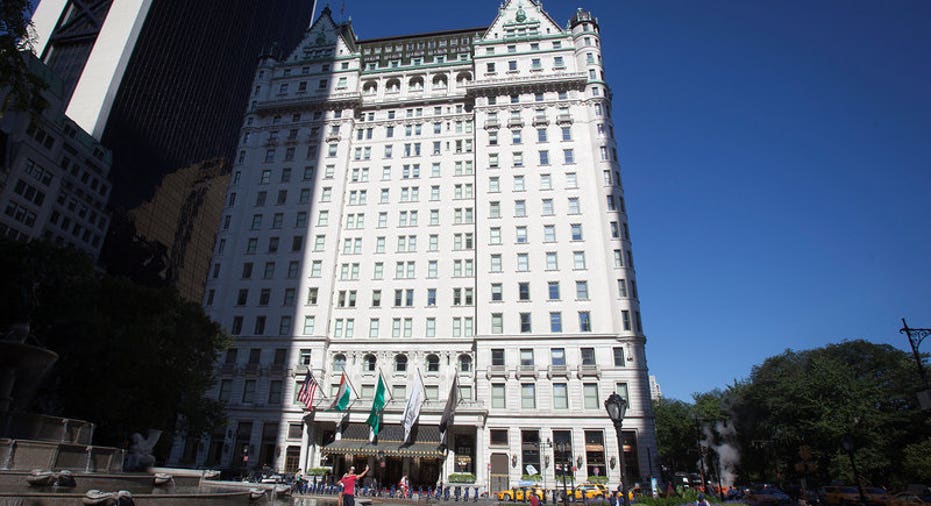Plaza memories may unnerve Trump-fueled dollar bulls

LONDON – Parallels between Donald Trump's U.S. economic plan and early 1980s Reaganomics have supercharged the dollar, reminding some that its rampant gains 30 years ago eventually required intervention to reverse them.
The greenback's surge under then-president Ronald Reagan was so powerful that by 1985 it required a rare international accord between the world's five leading economic powers and their central banks to weaken the currency - the so-called Plaza Accord, named after the New York hotel where the deal was inked.
Trump - who purely coincidently owned the Plaza for a while after the accord - has pledged a $1 trillion fiscal package of tax cuts and infrastructure spending over 10 years. This follows a path set by Reagan in the early 1980s and markets are taking their cue.
The rise in U.S. bond yields and expected path for interest rates based on growth prospects has boosted the dollar's five-year rally, lifting the currency to a 14-year high.
Most observers expect it to appreciate next year as the U.S. economy outperforms and the Federal Reserve raises rates while other major economies and central banks lag behind.
But the dollar can only rise so much without harming U.S. manufacturing, a sector Trump has promised to support. Memories linger of the three million manufacturing jobs lost in the early 1980s under Reagan before the historic agreement in 1985 between the Group of Five leading economies to bring the dollar down.
Nigel Lawson, British finance minister in 1985 and a signatory of the Plaza Accord, notes that the drive to weaken the dollar then was led by Washington.
"The Plaza agreement was a U.S. initiative," Lawson told Reuters in an email. "In present circumstances, that seems unlikely to occur."
Jim O'Neill, former chief economist at Goldman Sachs who was cutting his teeth in currency markets in New York at the time of the accord, agrees that no action will be taken yet. But history shows that dollar appreciation always ends up being met with resistance from Washington.
"Dollar expansions usually end when U.S. policymakers stop them and say 'enough is enough'," O'Neill said. "It's inevitable that Washington curbs the dollar rally at some point. It's illogical that the U.S. can tolerate a sharp rise in the trade-weighted dollar."
NOT THE SAME
While there are parallels today with the early 1980s, there are also huge differences. When Reagan entered the White House in 1981 the U.S. current account was broadly balanced. But the dollar's surge and debt-driven consumer boom blew it out to a deficit of around 3 percent of gross domestic product by Plaza.
The deficit today is just over 2 percent of GDP compared with a record 6 percent a decade ago, but could start to widen again if a Trump boom emerges to widen the U.S. growth and yield gap with the rest of the developed world.
Another difference is the level of U.S. interest rates and inflation. Back then, Fed chief Paul Volcker crushed 15 percent inflation by virtually doubling interest rates to 18 percent in 1981.
U.S. inflation and rates may be moving higher again, but from historically low levels. They pale against Volcker/Reagan era, even if the path for U.S. policy and the dollar appears to be diverging widely with Europe and Japan.
Then there's emerging markets, and China in particular.
Emerging markets now account for more than half global economic output and have stockpiled trillions of dollars of foreign exchange reserves, much of that banked in U.S. bonds. The electronic flow of capital across borders has never been greater or faster.
Thirty five years ago their presence on the global economic and financial stage was negligible. China's weighting in the trade-weighted dollar in 1981 was less than 1.5 percent.
Today, it is almost 22 percent. China is now the world's second biggest economy, the largest international creditor to the United States, and dollar-denominated borrowing in emerging markets runs into the trillions of dollars.
The stock of dollar-denominated debt of non-banks outside the United States currently stands at just under $10 trillion, of which $3.3 trillion is in emerging markets, according to the Bank for International Settlements.
This worldwide vulnerability to a rampantly strong dollar could serve as an automatic stabilizer because it is in everyone's interest to keep it for overly strengthening.
Steve Barrow, head of G10 strategy at Standard Bank and who also cut his teeth in financial markets at the time of Plaza, reckons the dollar's "impulsive" rally could go another 10 percent before being corrected by the market.
"Plaza came after the dollar had turned. Central banks came in to reinforce it ," Barrow said.
For a graphic on Dollar history, 7-year cycles? http://fingfx.thomsonreuters.com/2015/03/25/164746048b.htm
(Reporting by Jamie McGeever; Editing by Jeremy Gaunt)



















